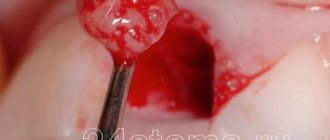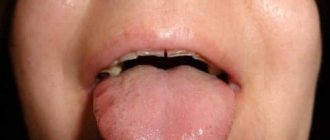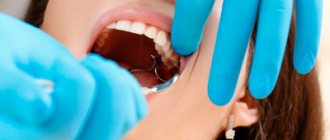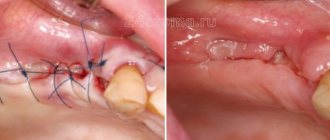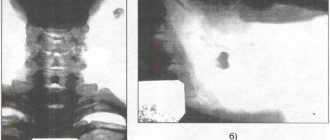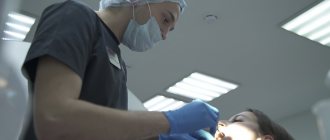After tooth extraction, especially if the procedure was complex, there is inflammation, swelling, suppuration in the mouth, you want to speed up the healing process of the wound and avoid complications from the appearance of pathogenic bacteria in it. To achieve this, surgeons often recommend mouth rinsing after surgery. But this does not always happen - sometimes the doctor will advise you not to do this.
Why is that? What is the correct way – when and with what to rinse your mouth after tooth extraction, and whether to rinse? We're talking to the doctors at the Family Smile dental clinic.
How gums heal after tooth extraction
It is worth knowing the specifics of the process in order to understand what is considered normal and what is not, and whether it is worth contacting the dentist again.
The average tissue recovery time is 10-15 days. During this period, the pain goes away, and new mucous gum tissue appears in place of the hole.
It all happens like this:
In the first two to three hours after the manipulation, the gums may bleed, and a thrombus will form in the socket - a blood clot that closes the wound from the penetration of bacteria. You shouldn’t injure him or try to spit him out.
Up to three days after the operation, the blood clot gradually thickens, decreases, and connective tissue begins to form inside the wound.
Three to seven days after the operation, the clot becomes lighter, and the hole is covered with young connective tissue. Pain and swelling go away.
After one to two weeks, bone tissue begins to form under the gum, in place of the extracted tooth.
After a couple of weeks, superficial healing is complete.
The timing may vary depending on the specific case and the patient’s health condition.
Do not ignore:
swelling, pain, bloody or other discharge from the socket that does not go away for more than 4 days.A “dry” socket is a deep cavity in the gum without a blood clot, but with a yellowish-gray, greenish, white coating and the smell of rotting.
Difficulty opening the mouth, clicking, pain in the temporomandibular joint that appeared after removal and did not go away within 2-3 days.
Numbness in parts of the gums and cheeks that did not go away after the anesthesia ended.
Runny nose, nasal congestion, and fever that appeared after removal.
In these cases, be sure to consult your doctor again.
Features of wisdom teeth
Third molars are located deep in the mouth, at the very end of the lower and upper rows. Their differences from other teeth consist not only in such a delayed and slow eruption, but also in the development of complications accompanying this process.
Wisdom teeth are similar in structure to regular chewing teeth: they have a wide crown with cusps, several roots (2 on the lower jaw and 3 on the upper jaw). They usually do not have enough space at the end of the row, and in the immediate vicinity there are ligaments and chewing muscles attached that prevent these teeth from growing. Therefore, the “eights” tilt to the side, rest against the cheek, against the “neighbors,” or cannot cut through at all. Hence the unbearable pain.
The hygiene of third painters is difficult, so their enamel is quickly destroyed. In addition, if they rest against nearby teeth, they destroy them too.
Let's list the troubles that can be expected from wisdom teeth:
- caries - damage to the enamel, its blackening and the appearance of a hole;
- pericoronitis - inflammation of the tissues surrounding the tooth, and the formation of a mucous membrane over it - the so-called “hood”, under which food debris gets trapped, forming plaque. This provokes an unpleasant odor and inflammation with high temperature in this area;
- movement of other teeth in the row leading to pain (for example, canines);
- chronic cheek biting;
- compression of the branches of the ternary nerve, leading to numbness of part of the jaw and unpleasant sensations;
- the development of a cyst provoked by the presence of chronic inflammation around the tooth.
Based on the problems described above, it is quite clear that wisdom teeth have to be treated or removed, although this is difficult to do due to their location and also because their roots are either fused or intertwined.
How to rinse your mouth after surgery
Ready-made pharmacy antiseptics and solutions made independently at home are applicable. Let's consider how to rinse your mouth after gum surgery or tooth extraction.
Your doctor may recommend not rinsing the wound on the day of surgery. Every other day, you can make oral baths with decoctions of chamomile, sage, or solutions of furatsilin, 0.05% chlorhexidine.
There are quite a few such drugs, and your doctor will give specific recommendations on what to rinse your mouth after gum or tooth removal. The choice of a suitable drug depends on the condition of the hole, the complexity of removal, the age of the patient, whether he has allergies or sensitivity to some components of the products.
Carefully! It is not recommended to use ethyl alcohol, hydrogen peroxide solution, brilliant green or iodine for rinsing. They can cause pain, burn the mucous membrane and lead to the detachment of a fresh clot.
Indications
If the tooth extraction was planned, it did not hurt, there was no purulent discharge, then there is no point in rinsing. In a healthy person with a strong immune system, overgrowth occurs on its own, without additional manipulation.
The main indication for performing such a procedure is the order of the surgeon who performed the removal. When pus is found in the hole during extirpation, the doctor prescribes medications and explains how to make oral baths.
Rinsing will be beneficial and promote speedy healing in the following cases:
- Inflammatory phenomena - if the tooth was very painful before, there was swelling, pulsation or an increase in temperature - these are signs of the accumulation of purulent exudate.
- Periostitis - when, simultaneously with tooth extraction, an incision was made on the gum due to “flux”.
- Decayed teeth - if there are carious lesions and other sources of infection in the mouth, then rinsing will protect the hole from infection.
Thanks to rinsing, pathogenic microorganisms die, but you should always remember that such manipulation should be gentle and, hiding behind the imaginary benefits, not cause even more harm.
How to rinse your mouth after tooth extraction
The main rule is not to rinse your mouth too vigorously. Immediately after tooth extraction, you should do oral baths rather than vigorous rinsing. Rinsing vigorously may cause the fresh clot to fall out of the socket. Bleeding will occur and healing will be delayed.
How to rinse your mouth with Chlorhexidine after tooth extraction? Let's use the example of this popular tool. First, rinse the mouth with warm boiled water to remove any remaining food. Then we put 15-20 ml of the drug into the mouth and hold it for 15-30 seconds. On the second or third day after removal, gentle rinsing movements are allowed. Spit and repeat 2-3 more times. The number of rinses during the day is 3-6.
How much to rinse your mouth after tooth extraction depends on how the healing is progressing. You can stop rinsing when young gum tissue has formed at the site of the hole.
What needs to be done in parallel with rinsing -
But after tooth extraction, it is important to perform not only antiseptic rinses (baths) in the oral cavity, but also to follow other recommendations, which will fully allow you to avoid the development of inflammation in the socket of the extracted tooth. Also, in addition to following general recommendations, in some cases it may be necessary to take medications - analgesics, antihistamines, and antibiotics.
- Analgesics (NSAIDs group) – the optimal choice of painkillers in dentistry are drugs from the NSAIDs group (non-steroidal anti-inflammatory drugs). Drugs in this group not only relieve pain well, but also at the same time reduce inflammation in tissues. If the removal was difficult, it is best to start taking one of these drugs before the local anesthesia wears off. Drugs from the NSAID group include: ibuprofen, nurofen, ketorol, ketanov, ketoprofen and others (which one is better - read the link above).
- Antihistamines - this group of drugs has not only antiallergic, but also anti-edematous/anti-inflammatory effects, and also enhances the effect of analgesics. If the removal was very traumatic, then we recommend taking a drug such as Suprastin for the first 3 days (1 tablet 1 time per day before bedtime).
- Antibiotic therapy - antibiotics are prescribed by a doctor in two cases. Firstly, when a tooth was removed due to purulent inflammation (with or without a gum incision). This is very important because... infection can lead to suppuration of the blood clot, its necrotic disintegration and the development of alveolitis. Typically, dental surgeons prescribe the antibiotic Lincomycin (2 capsules 3 times a day, for 5-7 days). But for gastrointestinal diseases, it is better to use Flemoxin Solutab or Unidox Solutab.
How to eat after tooth extraction
There is an opinion that it is better to fast for the first day after surgery and drink through a straw so that liquid does not get into the wound.
In fact, everything is not so: You can already eat 2-3 hours after the manipulation - the body needs strength to recover. For several days, you should include slightly warm, soft foods in your diet and avoid hard, spicy, too cold or hot foods. Optimal choice: puree soups, milk porridge, stew.
You can drink immediately after removing the cotton swab from your mouth. Contrary to popular recommendations, you should not drink through a straw - when you retract your cheeks, a vacuum effect is created, which can tear the clot from the wound.
The dentist will talk about the main points in oral care after surgery and answer questions after the procedure. Follow the recommendations so that you don’t encounter complications and healing goes quickly!
Why salt?
A salt solution was used against tooth pain and gum inflammation back in the days of Stepan Razin. In Rus', they did not know a more effective means of quickly eliminating toothache. Surprisingly, this white powder not only eliminates unpleasant symptoms, but also gives you good health for a long time.
In addition, the salt solution helps reduce tissue inflammation by “pulling” fluid from the inflamed area. Once in the mouth, the salt begins to absorb all the pathogenic bacteria from the gums, the solution penetrates even the narrowest crevices, holes and cracks in the tooth enamel. In addition, the saline solution quickly flushes away food debris, which often causes inflammation.
Back in the 17th century, Anthony van Leeuwenhoek discovered the unique disinfecting characteristics of salt: the scientist measured the number of microbes in a scraping of the oral cavity and realized that rinsing with salt would help prevent many infections and diseases in this area.
- Sodium chloride salt draws liquid from the affected area, and therefore prevents bacteria from multiplying.
- Salt disinfects tissues, washes away harmful microorganisms, disinfecting even the most inaccessible areas.
- The salt solution contains a huge amount of useful microelements.
- Salt does not cause allergies and has no side effects even if the solution is carelessly swallowed.
Using medications to help gums heal faster
Pharmaceutical preparations for rinsing the mouth are very popular.
- Stomatophyte - it is made using herbal extracts that relieve inflammation. The medicine must be diluted with water to the concentration specified by the manufacturer. The kit includes a measuring cup. The solution does not irritate the mucous membrane, therefore it is suitable for use after tooth extraction;
- Chlorophyllipt – made from eucalyptus extract. For dental purposes, it is often used in the form of an alcohol infusion, so after tooth extraction it should be used carefully to avoid burns;
- Salvin is an alcohol-containing preparation that contains essential oil and tannins. To use for rinsing, the product must be made low-concentrated, diluted with water in a ratio of 1:10. In such a low concentration, the alcohol tincture does not dry out the tissues of the oral cavity. At the first sign of irritation, discontinue use immediately.
